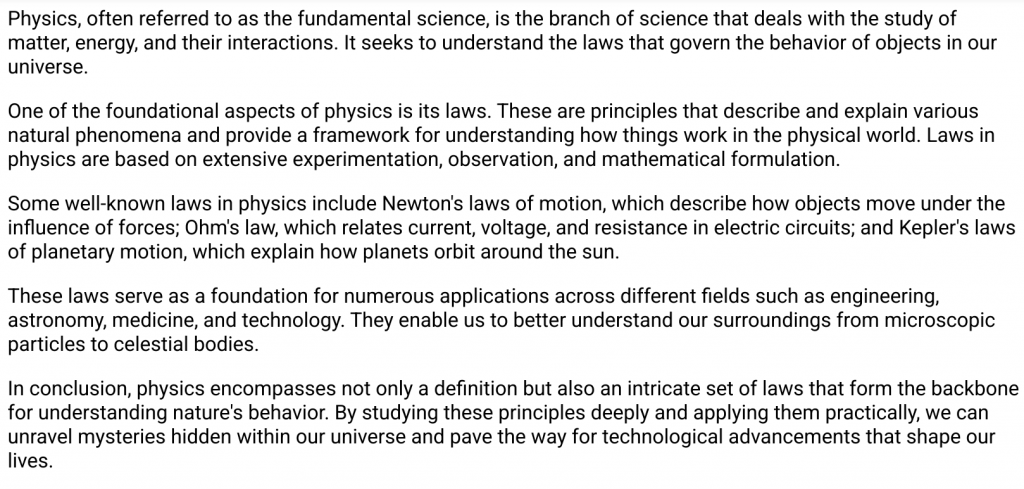Physics and Its Laws
Summary:
Physics, often described as the fundamental science, delves into the study of matter, energy, and their interactions, aiming to decipher the laws governing the universe’s behaviour. These laws, grounded in extensive experimentation, observation, and mathematical formulation, provide a framework for understanding physical phenomena. Key laws include Newton’s laws of motion, which detail the movement of objects under force; Ohm’s law, linking current, voltage, and resistance in electrical circuits; and Kepler’s laws of planetary motion, elucidating planetary orbits around the sun. These principles underpin many fields like engineering, astronomy, medicine, and technology, enhancing our understanding of everything from microscopic particles to celestial bodies.
The discipline of physics is rooted in the exploration of matter, energy, space, and time, with laws like Newton’s Three Laws of Motion and Kepler’s Laws of Planetary Motion being pivotal. Newton’s laws articulate how objects interact with forces and motion, while Kepler’s laws describe planetary orbits. These laws, among others, form a predictive and explanatory framework for diverse natural phenomena.
At its essence, physics employs experiments, observations, and mathematical models to unravel nature’s laws. From Newton’s laws, which connect force, motion, and mass, to energy conservation principles, these laws are vital for understanding natural phenomena and driving technological innovation.
Excerpt:
Physics and Its Laws
Physics, often referred to as fundamental science, is the branch of science that studies matter, energy, and their interactions. It seeks to understand the laws that govern the behaviour of objects in our
universe.
One of the foundational aspects of physics is its laws. These principles describe and explain various natural phenomena and provide a framework for understanding how things work in the physical world. Laws in
physics is based on extensive experimentation, observation, and mathematical formulation.
Some well-known laws in physics include Newton’s laws of motion, which describe how objects move under the
influence of forces; Ohm’s law, which relates current, voltage, and resistance in electric circuits; and Kepler’s laws
of planetary motion, which explains how planets orbit around the sun.


Reviews